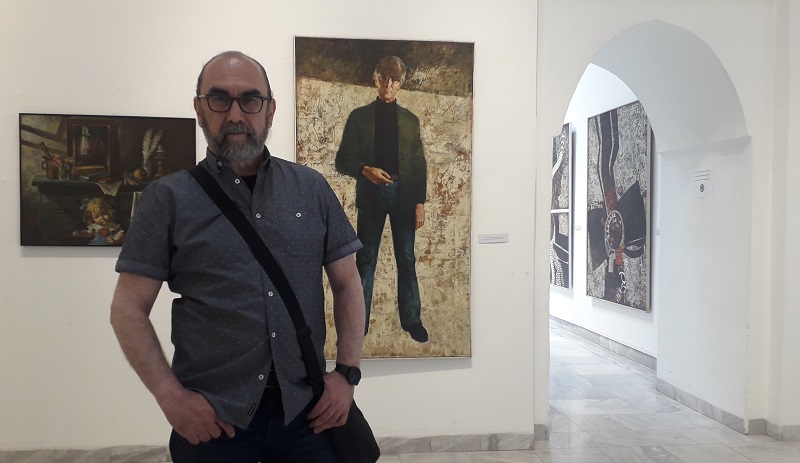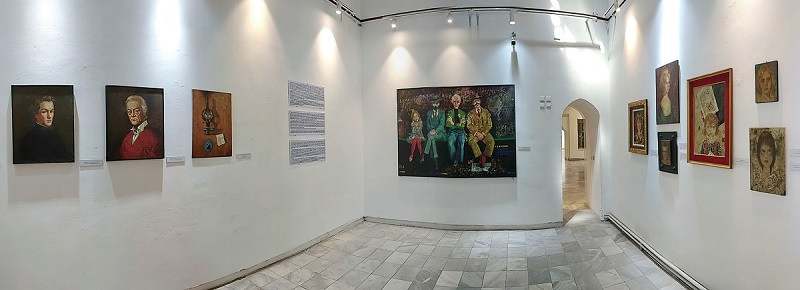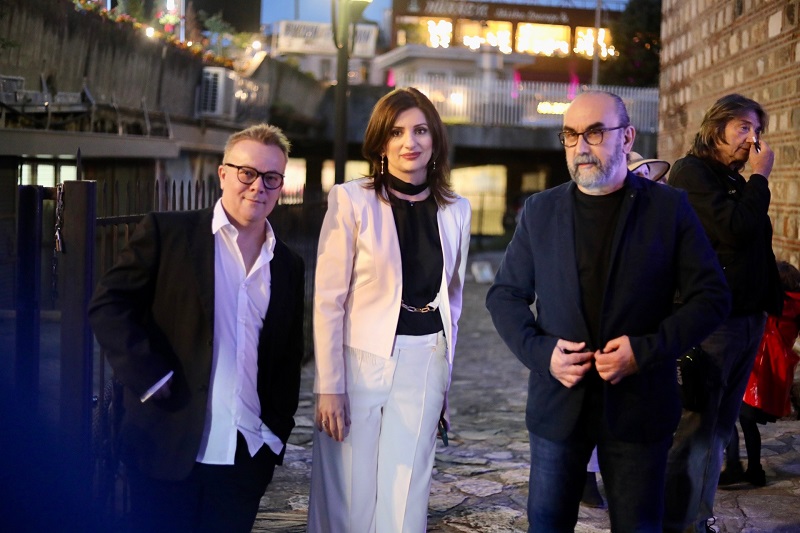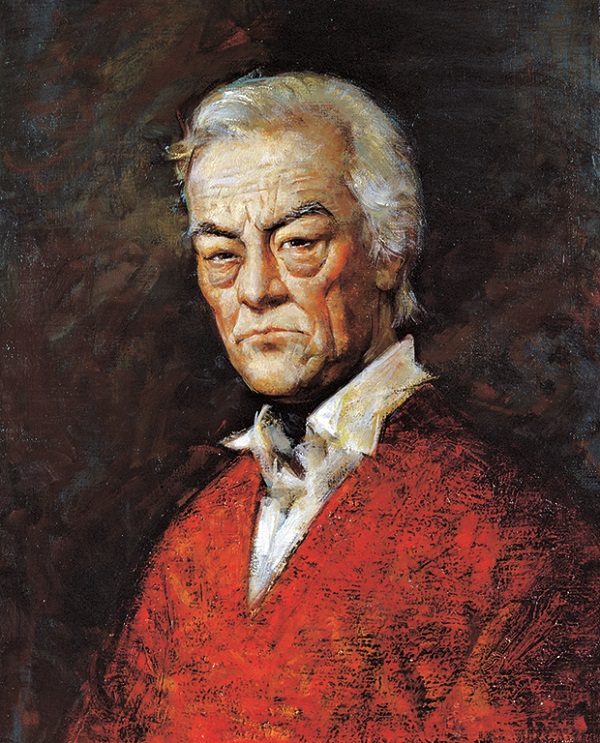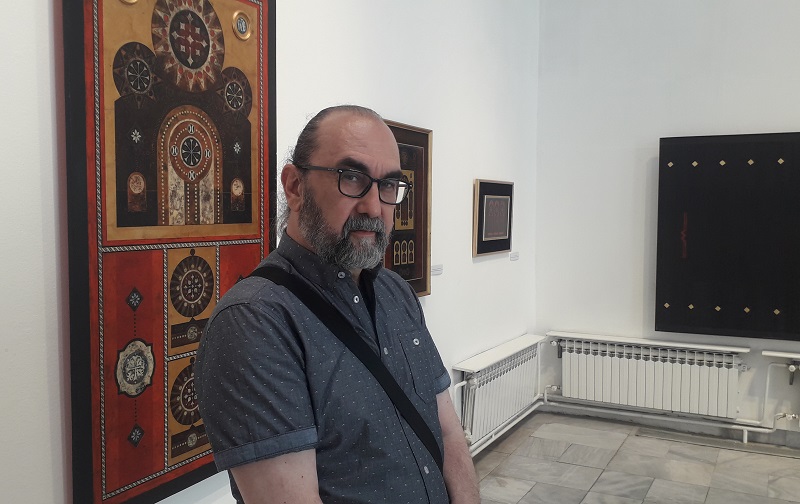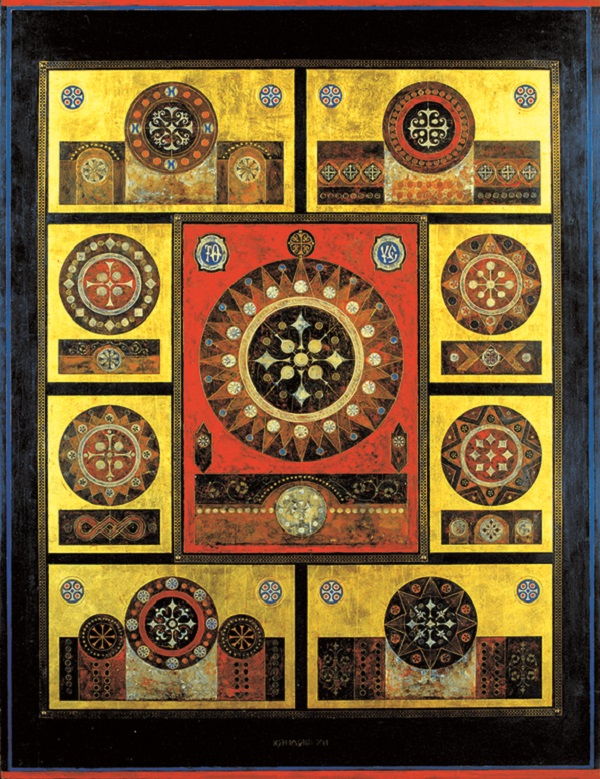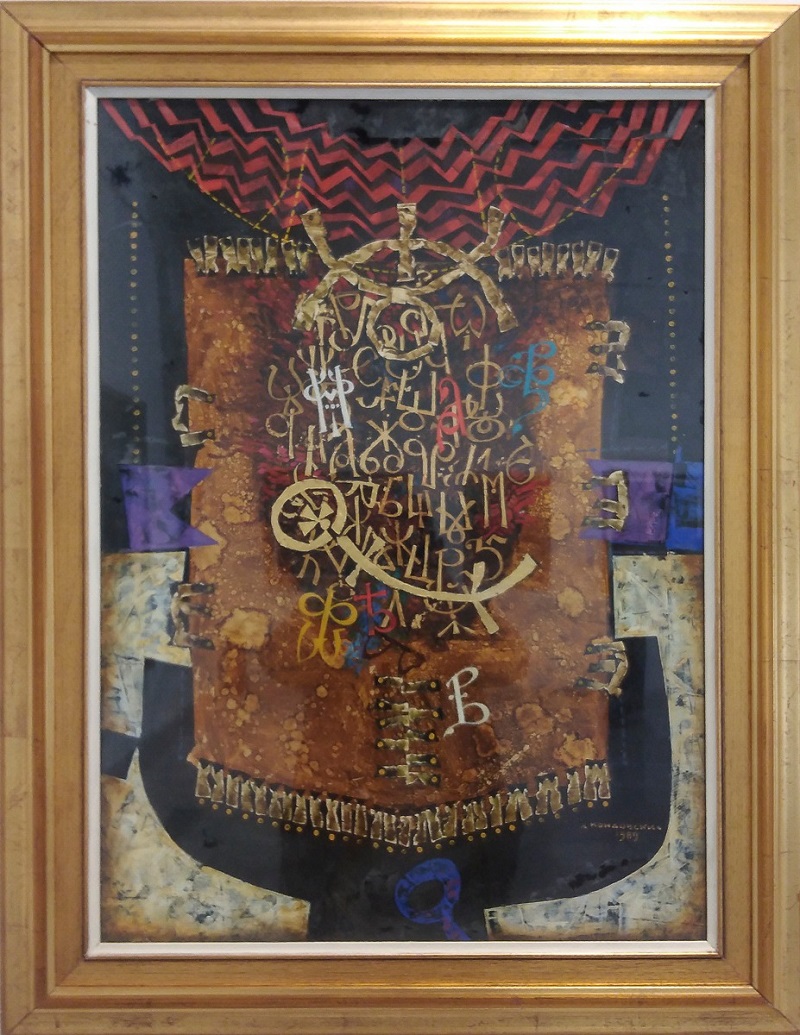Interview with art historian Emil Aleksiev: Dimitar Kondovski left an indelible, deep and lasting mark in time
The retrospective exhibition with about a hundred works by Dimitar Kondovski has been fascinating the art public for about 15 days, and we talked about the details of the exhibition and the significance of Kondovski with the art historian Emil Aleksiev.
For more than thirty years, the art public has not had the opportunity to see live the works of the creative heritage of Dimitar Kondovski (1927, Prilep - 1993, Skopje). Finally, on May 5, 2022, a retrospective exhibition of hundreds of his works from all creative phases was opened at the National Gallery - Daut Pasha Amam.
The art historian Emil Aleksiev, who is the curator of the exhibition and the author of the text in the catalog, worked on the preparation of the project, together with the team of the National Gallery and the Kondovski family. "Gold and purple, Byzantine blue, filigree Arabic, the intricate interweaving of lines forming a lavish ornament, enigmatic signs and esoteric symbols have remained a lasting mark of his work," Aleksiev wrote in the catalog's introductory text.
In the conversation for "Cultural Press" Aleksiev talks about the significance of Kondovski's work then and now, but also emphasizes his timeless dimension.
There was a fascinating response at the opening of the retrospective exhibition of works by Dimitar Kondovski in the National Gallery - Daut-Pashin Amam building. You are the author of both the setting and the text in the extensive and luxurious catalog. Practically, how long did you prepare the exhibition?
- Dimitar Kondovski is one of the few Macedonian artists whose work has left an indelible, deep and lasting mark in time. His exceptional creative work is a cornerstone on which contemporary Macedonian art is built and built. Hence, the interest of the Macedonian cultural audience for his work is understandable.
Due to the complexity of the project, the exhibition has been prepared for two years. In fact, it has been three years since the National Gallery and I decided to organize a retrospective exhibition. We considered it necessary to present the entire development path and to present all periods of the work of Dimitar Kondovski because it has not been done so far.
The exhibition is divided into six parts and presents the most important stages in painting and marks the reference points of his work, such as his first solo exhibition in Skopje since 1957, the transition period and the breakthrough in the style of 1962 and the works from the Sao Paulo Biennale. , Brazil, the exhibition from 1977, where he exhibits 77 abstract works in his studio, the scandal with the competition for painting the Cathedral "St. Kliment Ohridski ”in 1987 and the last solo exhibition at the Macedonian Academy of Sciences and Arts in 1992. Thus, this exhibition consistently follows his painting and records the stylistic changes from the beginning and his earliest works, until the end of his creative path.
What was the cooperation with the National Gallery, having in mind that as an art historian you are part of the staff of the Museum of the City of Skopje?
- The cooperation was at the highest level. The National Gallery had the initiative to organize this exhibition. The expert team from the National Gallery under the leadership of Dr. Dita Starova Qerimi and my collaborators Gorancho Gjorgievski and Aleksandra Zinovski-Vilic, as well as the technical team, professionally organized this important event.
What was the cooperation like with the Kondovski family and from how many sources are the exhibited works in Daut-Pashin Amam collected?
- This large retrospective exhibition could not have been realized without cooperation with the family and legates of Dimitar Kondovski, especially without the help of Filip Kondovski, son of Dimitar Kondovski. Most of the available works are permanently owned by the family and that is why we decided to have the most works from this huge collection. Especially considering that many of these works of art are not or are not sufficiently publicly presented at all. From the family collection of the exhibition in the National Gallery we exhibited ninety (90) paintings from all periods of Kondovski's work.
The exhibition and the text in the catalog cover the biography and all creative phases of Dimitar Kondovski. With what concept did you enter the selection of works and how many of them are presented at the exhibition?
- About one hundred (100) works by Dimitar Kondovski are presented at the exhibition. He left behind an impressive creative opus with still unseen dimensions. For these reasons, the purpose of this project was to systematize the activity of this exceptional author and to shed light on those dominant aspects that determine his creative activity. This methodological approach provides insight into the complex set of influences, ideological-aesthetic tendencies and authorial preoccupations of the artist.
In the text in the catalog, in addition to the biographical notes and the expertise of Kondovski's work, you draw a parallel with the social and cultural events of the time when the works were created. How much was the value of his work recognized in the time he lived and created?
- Dimitar Kondovski was an exceptional, charismatic and controversial person. The legend of Kondovski's genius as a painter begins in Rome, back in 1962, where he has set up a solo exhibition that will attract the attention of the Italian and Yugoslav cultural public. Then he sold all the works from that exhibition and today, unfortunately, we do not have data in which private collections those works are and for us they are inaccessible, and that is a whole breakthrough period of Kondovski's work.
Today it is little known that Dimitar Kondovski is one of the Macedonian artists with the largest number of international awards. He was respected and appreciated in our country, but he was in constant conflict with the environment and the institutions of the system. He was particularly dissatisfied and publicly criticized the work of museums and galleries. In protest, for example, in 1977, on the occasion of the twenty-fifth anniversary of his work, he independently organized an exhibition in his studio at his own expense. At the same time, he is a regular public critic of the cultural situation in Macedonia.
One of the characteristics of Dimitar Kondovski's creative activity is the effort for his works to be in constant communication with the audience in order to realize their own professional function in the social community. The persistent insistence on connecting with the broadest popular strata and engaging in popular culture undoubtedly corresponds to the ideas of the time, or rather appears as a reaction to the evident discrepancy between political theory and practice, between ideals and reality, which creates a critical awareness of Kondovski's place and the role of the artist in the social community. He believes that his works are intended for public buildings where they will be available to the widest circle of visitors. He gladly addresses the ignorant and the children. He understands his activity not only as a contemplative act, but as an action (action) within the real social circumstances and the specific social environment.
To what extent does the retrospective exhibition provide an opportunity to discover unknown details of his life and work almost thirty years after his death?
- Each work has its own story. They are all part of a larger whole and belong to a certain time when they played a significant role in Kondovski's life.
The works of abstract-geometric provenance or the iconic works made ammunition on a primed panel with gold and tempera are the most famous and the work of Dimitar Kondovski is recognized by them. However, little is known about his early works. The exhibition at the National Gallery was an opportunity to pay a little more attention to these works from the early period and to works that are extremely significant from the transition period in the sixties of the last century.
Is it possible from today's point of view to define what is the most important feature of Kondovski's work?
- Dimitar Kondovski in painting, from the very beginning of his artistic development, rapidly passed the path along which contemporary art has been moving for more than a century.
Kondovski continued his creative activity on two dynamic lines of development of fine arts. One determinant that determines his work is the geometric abstraction, which has its own complex genesis and which follows the Pythagorean-Platonic tradition and expresses the concept of the universe arranged according to precise numerical relations to which the analogous proportionality of the work of art corresponds. This determinant will find its special expression in the geometric construction of his works, the use of complex mathematical calculations to set the basic composition, the use of the golden ratio (sectio aurea), the Fibonacci sequence, the geometric modules and the canons for determining the proportions, up to absolute symmetry, which expresses universal harmony.
The second determinant that determines Kondovski's work is the painting of the sign and the symbol. In Kondovski's works, the sign always has a high symbolic value. It not only points to the author's inner world, but also reveals new perspectives on the universal, through the collective experience called by the abysses of time.
Its significance for Macedonian art is exceptional and its contribution to the theory of art is unsurpassed. With his work he opened new hitherto unseen opportunities for research in painting understood not as voluntary entertainment, decoration or re-presentation of reality, but as a search for truth and revealing the secrets of the world.
Since the opening of the exhibition, the attendance is high. What advice would you give to those who plan to visit the exhibition - what to pay the most attention to?
- Apart from enjoying the beauty of the works and the intelligence with which Kondovski solves the artistic problems in the painting, I think it is good to read the text of the monograph because the works are related to the time in which they were created and important events in culture and art such as in our country, as well as in the world.
(The interview was published in "Cultural Press" No. 129, in the print edition of the newspaper "Free Press" on May 21-22, 2022)


